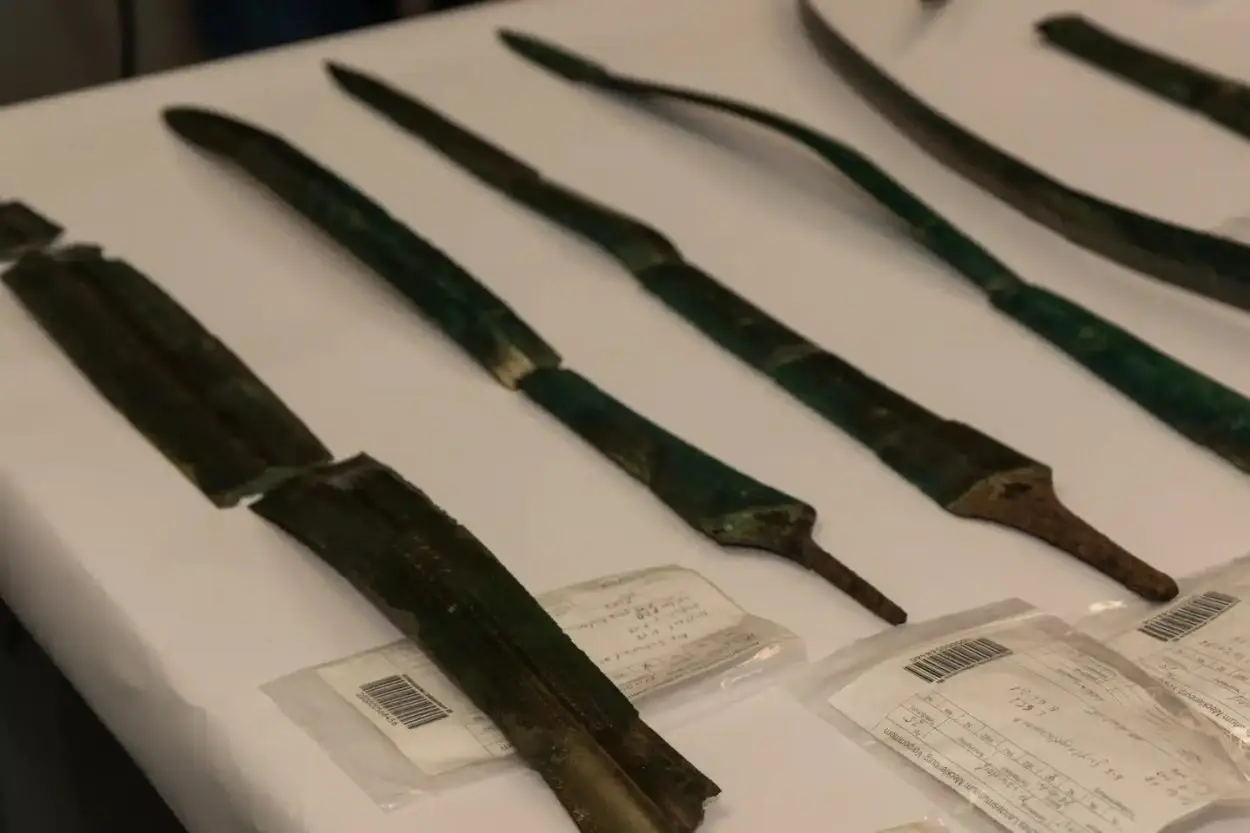In an announcement by the State Office for Culture and Monument Preservation (LAKD), archaeologists excavating in the German state of Mecklenburg-Western Pomerania have uncovered seven Bronze Age swords, 6,000 silver coins, and two Christian reliquary containers.
The swords were found in fragments near Mirow in the Mecklenburg Lake District, which were likely dispersed on the surface following dredgeing activities to excavate a trench.
According to the researchers, the swords were deposited as votive or sacrificial offerings during the Bronze Age around 3,000-years-ago.
“Although such deposits of valuable items are not unusual, so many Bronze Age swords have never been discovered in one place in Mecklenburg-Western Pomerania,” said the researchers.

Also in the LAKD announcement is the discovery of a treasure hoard near Rügen, consisting of 6,000 silver coins from the 11th century. The hoard was deposited in a clay pot, with hundreds of coins dispersed over the surface as a result of agricultural activity.
An examination of the coins have identified that the majority originate from Western Germany and the Meißen-Upper Lusatia region, however, around 10% of the coins originate from England, Denmark, Bohemia, and Hungary.
“The find is the largest Slavic coin hoard of the post-war period to date. The coin discovery therefore allows conclusions to be drawn about possible trade relationships in the 11th century,” said the researchers.
Another remarkable discovery are two distinctive reliquary containers shaped as a captorge and a crucifix which were unearthed in the Mecklenburg Lake District. Alongside the reliquary containers, archaeologists also found 1,700 coins, rings, a pearl necklace, rock crystals, and carnelian beads.
According to the announcement: “These two reliquary containers stand out significantly, serving as rare evidence of the Christian faith in a region that was predominantly influenced by other beliefs during that era.”
Header Image Credit : State Office for Culture and Monument Preservation (LAKD)





